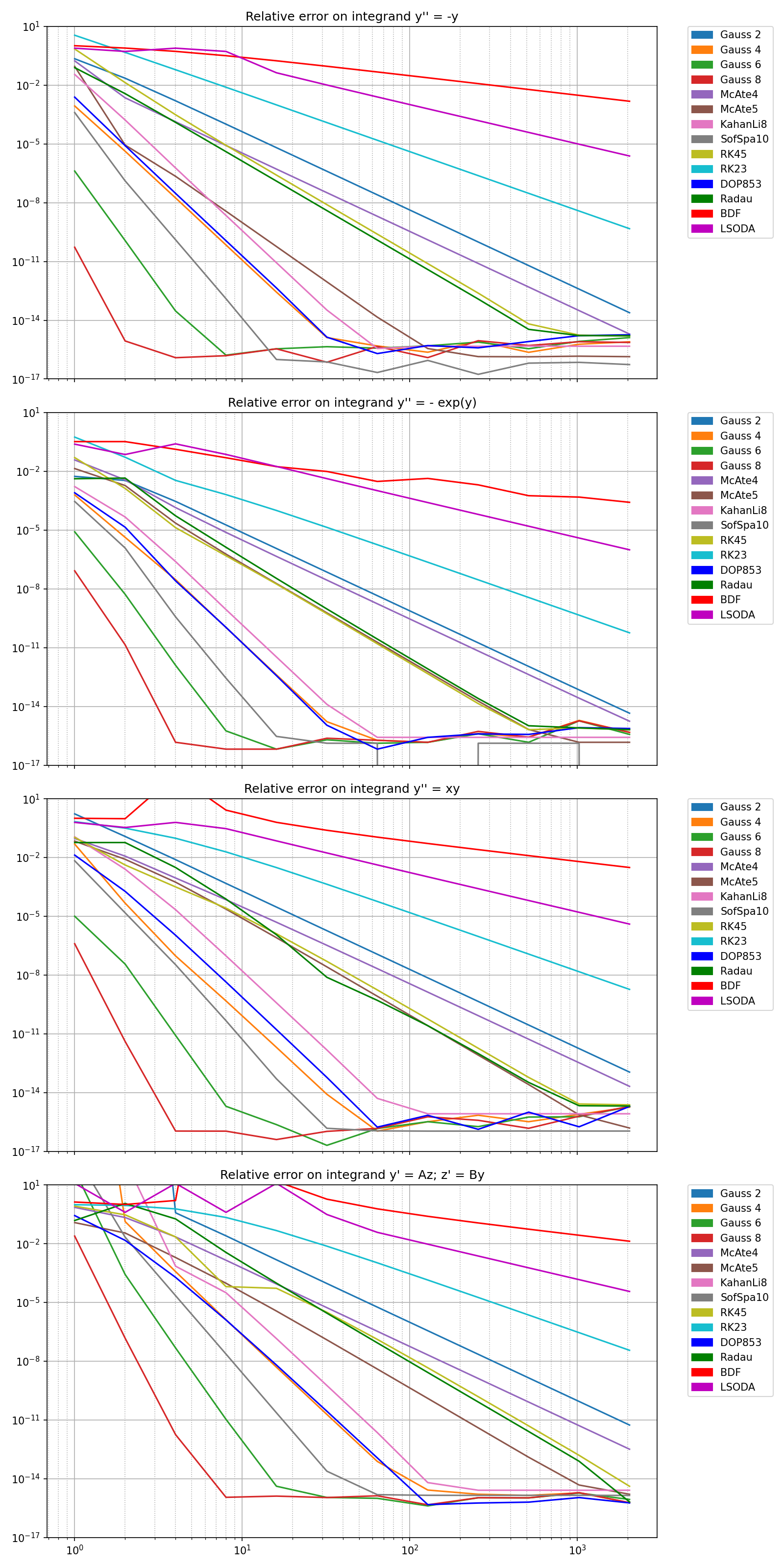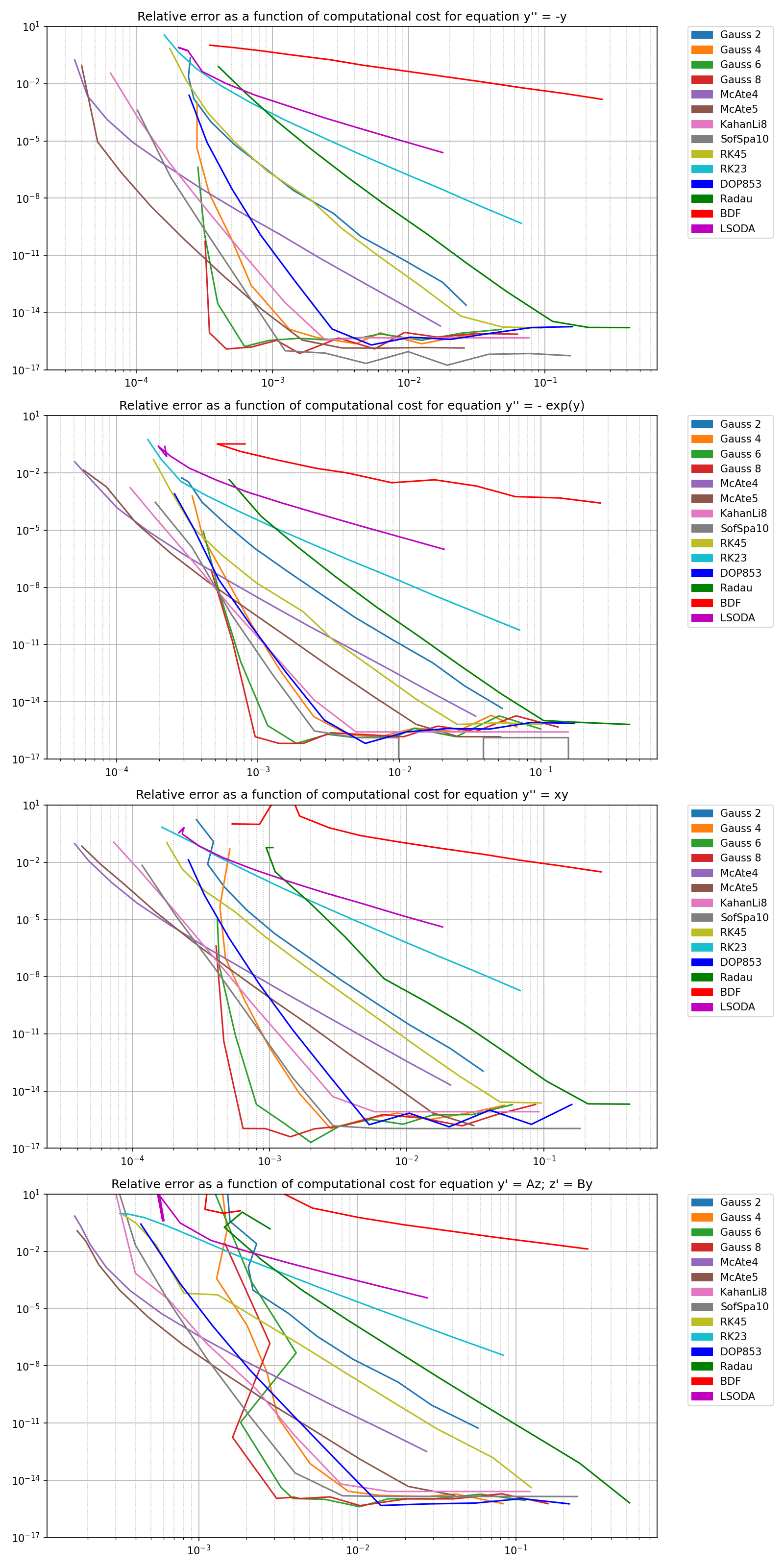Note
Go to the end to download the full example code.
Convergence analysis of Runge-Kutta methods for ODE IVP#
Evaluation of relative quadrature error with the following parameters:
eq_names = [
"y'' = -y" ,
"y'' = - exp(y)" ,
"y'' = xy" ,
"y' = Az; z' = By" ,
]
implicit_methods = {
f'{rk_name} {order}' : choreo.segm.multiprec_tables.ComputeImplicitSymplecticRKTablePair(order,method=rk_name) for rk_name, order in itertools.product(["Gauss"], [2,4,6,8])
# f'{rk_name} {order}' : choreo.segm.multiprec_tables.ComputeImplicitSymplecticRKTablePair(order, method=rk_name) for rk_name, order in itertools.product(["Radau_IIA"], [2,3,4,5])
}
explicit_methods = {
rk_name : getattr(globals()['precomputed_tables'], rk_name) for rk_name in [
'McAte4' ,
'McAte5' ,
'KahanLi8' ,
'SofSpa10' ,
]
}
scipy_methods = [
"RK45" ,
"RK23" ,
"DOP853" ,
"Radau" ,
"BDF" ,
"LSODA" ,
]
The following plots give the measured relative error as a function of the number of quadrature subintervals
plt.show()

Error as a function of running time
plt.show()
